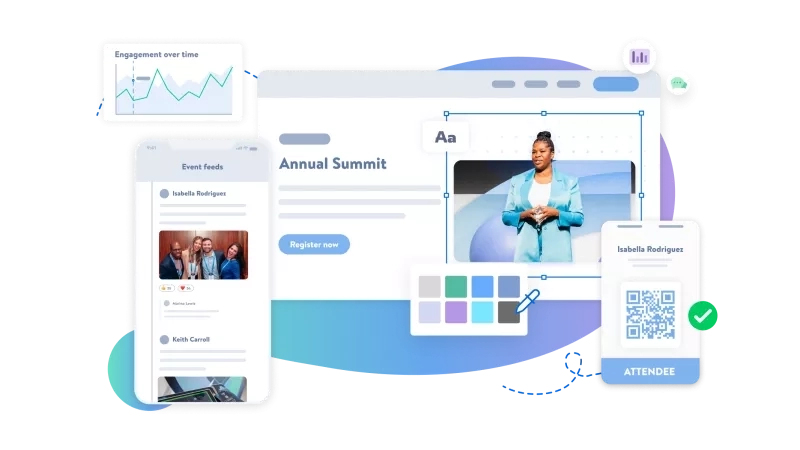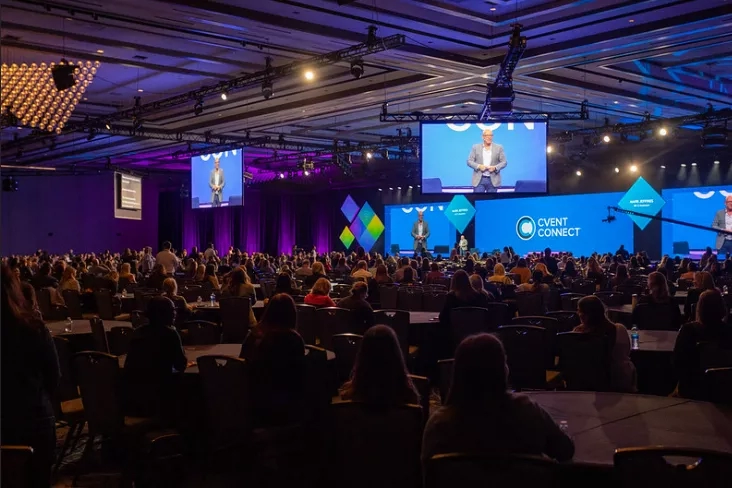The key objective of any event – virtual, hybrid, or in-person, is to engage audience and create an experience that remains with them for a long period. Today events have become multifaceted with a variety of formats available, which a planner can use as one-off or in combination to plan the right mix for the right audience. This requires a keen eye for detail and penchant for creativity.
Several manhours go into planning an event with the ultimate goal to achieve higher attendee engagement and satisfaction score. The planner is needed to meticulously look into each detail and requisite during the planning stage. Overlooking even the tiniest component can lead to bigger disappointments. Systematic planning at each step and understanding how each compliment the other can get you a long way in making your event a success. Hence, working on the overall design of an event is an apt solution here.
What is event designing?
Event designing is a process of creating an overall concept and aesthetic that will capture the attention of your guests, enhance the ambience, and create a memorable experience. The different elements impacting an event like visuals, audio and experience – are weaved together in harmony.
Like any other concept of design and décor the purpose of event designing here is to catch the eye of the attendees. It is an acquired skill that event designing professionals apply to make your event stand-out amongst the others. With more and more professionals leaning towards this concept, it has picked up great momentum in the recent period. In this blog, we will discuss the ten key steps involved in event designing.
10 Steps of a Perfect Event Designing Process
Step 1: Identifying the event goal
Before sketching an event design, it is important to establish the objective of the event. What is the end goal? What is it that the organization hopes to achieve from hosting this event? By having a clear understanding of the goals, it will be easier to create a design that aligns with the event's purpose. It could be a product launch, a team outing, a networking opportunity, or a fundraiser. Each event will need a unique event design to create the desired impact.
Step 2: Knowing your target audience
One of the most important factors involved in the event designing process is to clearly understand your audience, their preferences, and expectations. Being mindful of where they are coming from, what are the common interests and what brings them to your event will help you design the essential components of the event.
Decisions related to the most appropriate event format – virtual, hybrid or in-person, venue choice, event technology platform, catering, flow of event and entertainment, content delivery and engagement tactics, can be made quickly and effortlessly.
Step 3: Building the event flow
Event flow is the backbone of any event type. It includes the step-by-step narration of the entire event program. Having defined the event goal and the audience interest, the planner deep dives into what to be presented at what time. It is essential to keep the audience glued to the show.
Generally, an event comprises of a series of presentations, speeches, entertainment acts, audio and visual segments, and session breaks. A carefully designed event flow can avoid letting the audience attention fade away at any point during the event.
Step 4: Choosing the right venue
Most of the large-scale corporate events today are planned in the hybrid or in-person formats. Selecting the right venue is crucial to the success of these events. It is essential to find a venue that complements the event's goals as well as overall event design.
Venue options should be chosen based on the type of event, capacity requirements, budget, theme consistency and technology enablement. Especially in the case of in-person events, the venue choice also relies on key factors such as proximity from the nearest stations and ports, easy commuting and transportation and fulfilment of sustainability goals.
Step 5: Setting the floor plan
For audience to attend, engage and appreciate your event, it is vital that they are seated suitably and comfortably. This component of the event designing process is largely influenced by the event goal, format, and presentation of content. A floor plan can be shared with the audience indicating the key sections at the venue – such as entry, exits, convenience rooms, main hall, stage, and catering section. An event diagramming tool can be of efficient use for this purpose.
Step 6: Lighting the perfect lights
Lighting plays a significant role in enhancing the event experience; when used correctly, it can make the overall aesthetics appealing. The type of lighting design will impact the event's mood, tone, and overall appeal. A formal gala may require warm, and cozy lighting that enhances the event's luxurious and sophisticated feel. A techy product launch, on the other hand, may require a more modern and futuristic lighting setup with various interactive elements.
Step 7: Selecting furniture and décor
While improving the aesthetics or décor of the event the furniture and decorative elements play a vital role. These elements should be chosen based on the audience and event goals. Event decoration elements such as centerpieces, stage backdrops, and seating should create an environment that encourages communication, promotes brand identity, and reflects the event mission. For instance, a conference hall may require tables and chairs that facilitate communication among attendees, while a company awards ceremony may require more elegant seating and decor elements.
Step 8: Putting together the entertainment acts
The entertainment aspect of the event should not be overlooked. Choosing the right entertainment has the power to elevate the event’s zeal and create a positive and exciting experience for attendees. It is essential to choose entertainment that complements the overall theme of the event and aligns with the audience's preferences. A corporate event aimed at younger employees may require a DJ or band, while a corporate gala honoring company achievements may require a more formal classical act.
Step 9: Harmonizing the audio and visuals
A good audio and visual experience are the key to ensure your event is high on energy and dynamism - in most cases, it can make or break the experience. The audio and visual components include sound quality, visual aids such as projectors, and the flow of audio and visual components to ensure they are consistent with the overall event's aesthetic.
Step 10: Choosing the right technology
For events designed in virtual and hybrid formats, it is essential to employ the right technology – the right event design software. The technology plays an important role while ensuring the event is successful amongst the online audience.
This may require working with an expert event technology provider who can sync the event plan with the design seamlessly. The expert will ensure that the virtual audience is engaged throughout and is able to participate and interact during the event.
Event designing – A crucial part of event management process
In addition to event marketing and promotion, event designing is an equally crucial aspect of planning any corporate event, and the success of the event lies in how well the designer understands the end-goals, target audience, and design elements.
Event design is a lot of work that involves several moving components, and as such, it is always recommended to take help from a professional to handle the process altogether. A great event designer will listen to the organization's needs, advise on the best course of action to achieve the goals, and bring the vision to life. Ultimately, a company event that resonates with its audience will enhance its brand image and improve the ROI.










